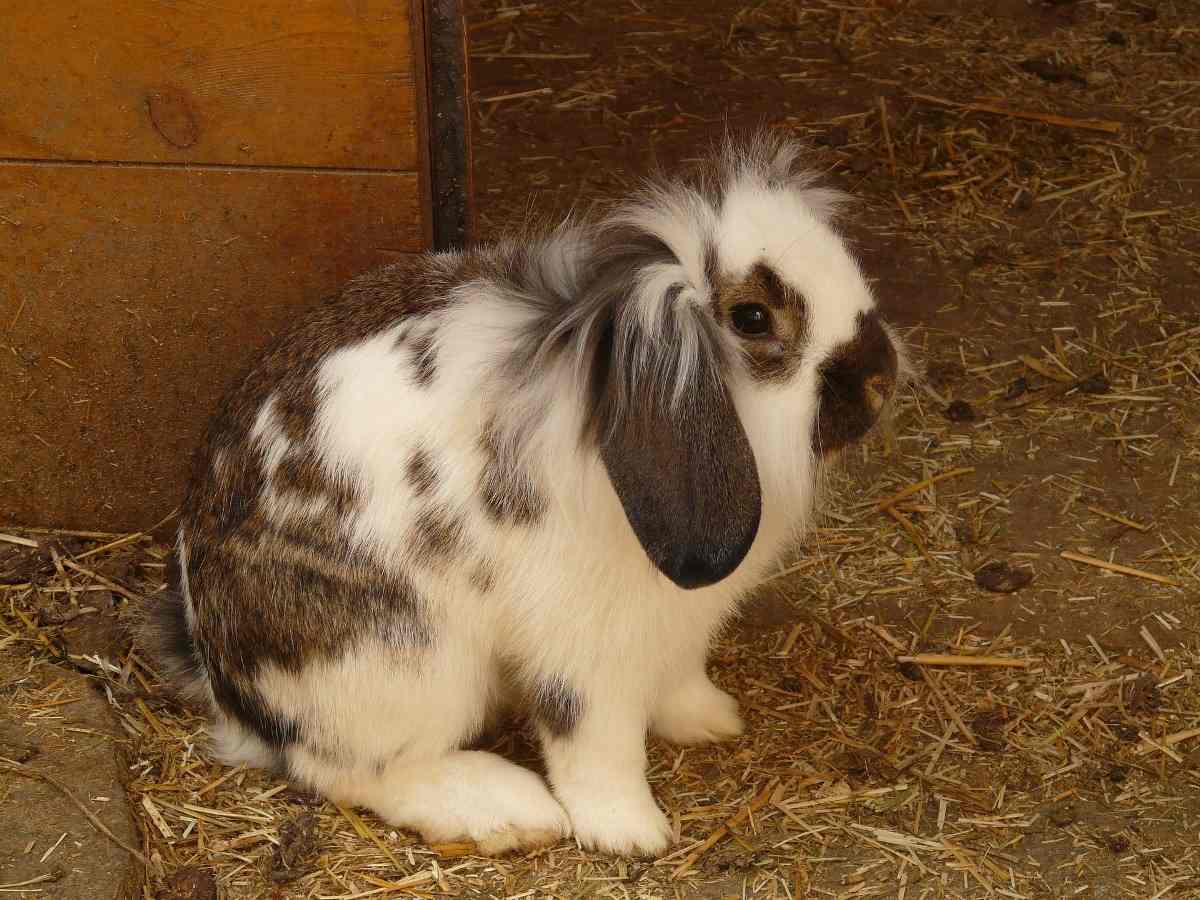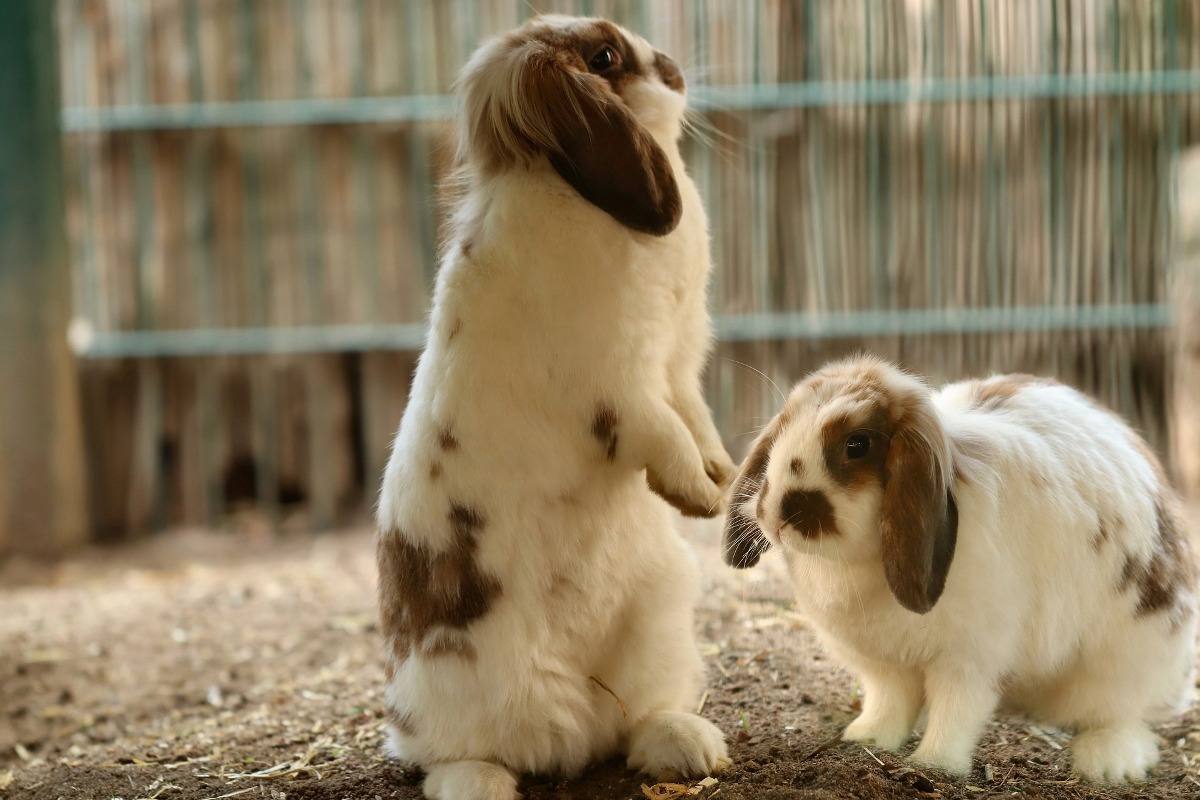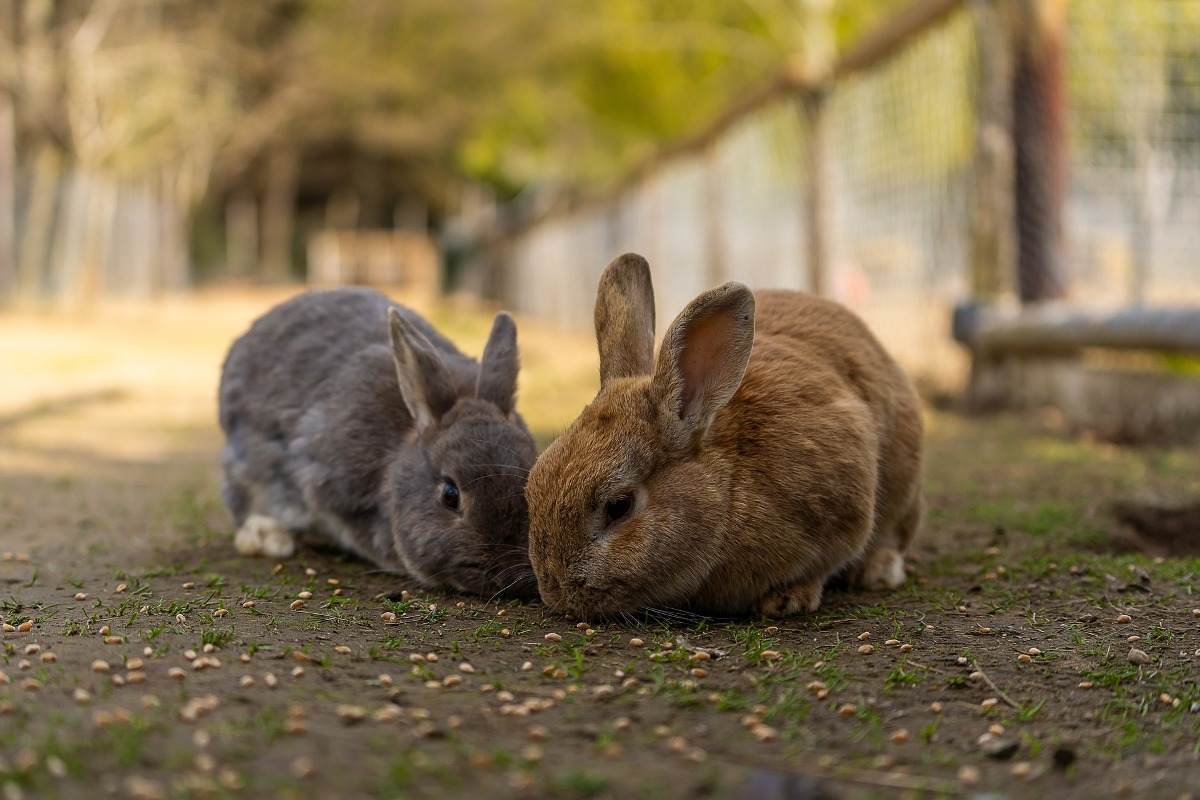Introduction to Rabbit diseases treatment and care: Rabbits are small mammals with fluffy, short tails, and long ears. There are more than 30 species around the world, they live in many different environments, and they have many things in common.
A step by step guide to Rabbit diseases, treatment and care
Rabbits are small mammals in the Leporidae family of the order Lagomorpha. For the adult pet bunny, the important food to feed is hay. Rabbits make great pets but they need certain conditions to be happy and healthy.

Provide fresh hay
A rabbit’s diet mainly consists of hay. Fresh hay must be provided to rabbits at all times. Baby rabbits must be given alfalfa, and adult rabbits must be fed timothy hay, grass hay, or oat hay.
Set up safe indoor housing
There are many options to house rabbits inside. Metal cages may be used wire flooring of 14 gauge wire but a solid floored area must be provided to prevent sore hocks and allow an area for resting. And solid floored cages could be covered with towels (as long as your bunny doesn’t eat towels), carpeting, wood, or synthetic fleece. Do not use solid-walled cages because proper air circulation is very important to prevent respiratory diseases.
Rabbits can be housed indoors or outdoors but care should be taken when housing rabbits outdoors. Bunnies are sensitive to high humidity and heat. A gallon jug frozen solid with ice can give cooling for a rabbit that cannot be brought into air-conditioning. Indoor rabbits must be kept monitored initially to make sure they don’t chew on electrical cords.
Rabbits can be litter box trained easily. Initially, you want to keep your pet in a small area, either in a cage or a blocked off section of the room and then place a litter box in the corner. It is useful to put some of the droppings in the box.
Set up a litter box
Rabbits contain a natural inclination to poop and pee in one area. Take advantage of this by setting up a medium-sized cat litter box near their food. Place a thin layer of rabbit-safe, recycled newspaper pellet litter at the litter box bottom. Do not use clay or clumping cat litter or wood shavings, as they are not safe for rabbits. Then put hay on top of the litter. Rabbits like to eat hay and poop at the same time; this will encourage good litter box habits.
Common Rabbit diseases and treatment
Incase if you miss this: Organic Farming Business Plan.

Swellings
These can be due to abscesses common around the head in particular or tumors. Generally, abscesses and tumors appear gradually over weeks. But you could notice them when they reach a certain size. If you discover any unusual lumps or bumps on the rabbit you should contact your vet as soon as possible.
Ear mites of Rabbit diseases
Ear mite infestation in rabbits is mainly caused by the parasite Psoroptes cuniculiis. The Ear mite symptom is skin scales on the inner ear, which turn into thicker crusted lesions with surrounding hair loss. Ear mites are normally not an emergency but if left untreated the lesions can become infected, which can cause loss of balance and hearing.
Breathing difficulties in rabbits
If you observe discharge from rabbit’s eyes and nose as well as noisy breathing, rabbit breathing fast, or open-mouthed breathing, you must contact your vet or, out of hours, your nearest Vets pet emergency clinic immediately. These can indicate respiratory infections or heat stress, which can be serious.
Holly, mistletoe and ivy poisoning
If your rabbit has eaten ivy symptoms can show within hours or they could take up to 3 days to appear. Ivy poisoning signs contain a lack of appetite, diarrhea, abdominal tenderness, and colic, also muscle twitching, paralysis, and convulsions. Holly and mistletoe can be poisonous.
Loss of balance or head tilt
Head tilt or loss of balance is caused by bacterial infections of the middle and inner ear or infections of the brain. And another common cause is the parasite Encephalitozoon cuniculi which is a significant cause of disease and can, occasionally, pass to humans. Once a rabbit has E. cuniculi. Then it passes infectious spores in its urine. Then transmission to another rabbit occurs by eating these spores in contaminated food. If the rabbit has been affected it may struggle to stand up and its head may circle continuously in one direction. Rabbits must be kept as quiet as possible with dimmed lighting to avoid self-injury occurring.
Rabbit viral hemorrhagic diseases
RVHD or VHD disease spread between rabbits by direct and indirect contact such as contaminated feed. It is also known as rabbit hemorrhagic disease (RHD), and viral hemorrhagic disease (VHD), this highly contagious disease was first recognized in China in 1984 but now has an almost worldwide distribution. VHD is caused by a calicivirus and, although the incubation period is up to three days, animals may die suddenly without any clinical signs. The virus can transmit over short distances in moist air. Rabbits that recover can become carriers of the virus and shed virus up to 4 weeks.
The disease is always fatal and death occurs rapidly, within 12 to 18 hours, from respiratory and heart failure. There is no known treatment and some strains of the virus have been detected in Australia. Vaccination must be performed by your vet at 10 to 12 weeks of age. Two doses should be given one month apart, and then 6-monthly boosters are required for continuing protection.
The spread of the virus is by insect vectors for example flies and mosquitoes thus rabbits must be kept in mosquito-proof hutches, or indoors, especially early mornings and evenings when mozzies are most active. If there are signs of infection, they have decreased to no appetite, fever, lethargy, and collapse. There could be convulsions and coma, difficulty breathing, foaming at the mouth, or bloody nasal discharge. Animals survive this acute phase but die a few weeks later from liver failure.
Loss of appetite
Loss of appetite disease is not a specific indicator of one disease; it can be serious as it can lead to a lack of gut movements. This can affect the onset of shock due to bacterial poisons. Any rabbit that fails to eat for more than 4 to 6 hours should be seen by a vet.
Paralysis of one or more limbs
Paralysis of one leg can be associated with a fracture, nerve damage or dislocation. Paralysis of both hind legs is likely to be associated with a spinal injury such as a fracture or dislocation. These sorts of injuries are most common in rabbits. Any rabbit showing signs of paralysis must be seen immediately.
Common diseases of pet Rabbits
You should not miss the NABARD Subsidy for Godown, Guidelines, Rules, Eligibility.

With proper attention to the rabbit’s diet and living requirements and with daily handling, many of these diseases can be prevented. If you notice any changes in the rabbit’s normal habits then you should seek veterinarian’s advice.
Hairballs
Hairballs are common in rabbits and should always be considered when a rabbit is lethargic and not eating. A large amount of hair is swallowed during grooming it can form a ball in the stomach and form an obstruction if it doesn’t pass through the intestinal tract. Rabbits are unusual in that they can’t vomit and diagnosis can be made by taking X-rays of the stomach. Early treatment by a vet is recommended to avoid the possibility of surgery
The treatment contains the injection of drugs that alter intestinal motility and fluid therapy. Prevention is far better than cure. Feeding rabbits a diet high in hay or fiber helps prevent hairballs and other intestinal problems. Daily brushing is essential for removing excess dead hair and your vet can recommend using cat hairball medicine regularly.
Parasites
Rabbits are susceptible to various internal parasites. Yearly microscopic examination of the rabbit’s droppings is essential to its health. Your vet will prescribe the essential medication, depending on the findings. External parasites, such as fleas, ticks, mange, and ear mites can infect rabbits.
The product benefit is now registered for the treatment and prevention of fleas in rabbits (take care with small rabbits). Never use Frontline or any other dog or cat flea control products on rabbits, and prevent the rabbit from licking your dog or cat if a topical medication has recently been applied to them.
Overgrown incisors
Rabbit’s incisors, or front teeth, produce continuously throughout their life. Generally, chewing on their food and woodblocks keeps them at a normal length. Sometimes this is not enough and the incisors overgrown. The rabbit will be unable to eat accurately and unable to groom. Its coat will become ragged and notice excessive drooling. The treatment contains filing the incisors under anesthesia. Clipping the teeth is no longer recommended as they can fracture simply and become infected.
Snuffles of Rabbit diseases
‘Snuffles’ is a common infectious disease of young rabbits and caused by the Pasteurella bacterium. Snuffles symptoms include sneezing and a watery nose or eyes. Pasteurella can affect other parts of the body and cause ear infections (resulting in a head tilt), abscesses (seen as lumps on the body) and uterine infections. Disease treatment involves antibiotics that are prescribed by a vet, as many are toxic to rabbits and injections are preferred. Eye and nose drops may be provided.
You may also check the Plant Nursery Project Report for Bank Loan.
Pasteurella, while easy to treat, is impossible to cure. Many rabbits develop a chronic (constant) infection and always have a snuffly nose. The disease is simply transmitted between rabbits, so new rabbits want to be housed away from existing pets for the first month.
Sore hocks
‘Sore hocks’ mainly refers to the development of open sores on the rabbit’s hocks. Rabbit is sitting its hocks are in contact with the floor of the cage. Dirty housing conditions and wire floors with no bedding will cause the improvement of sore, red areas that become ulcerated and painful. Treatment can be difficult, particularly if the condition is advanced. Antibacterial medications to clean the wounds are necessary and soft bedding provided to allow the sores to heal. Prevent the condition from occurring by providing adequate bedding and some solid floor area if the rabbit has a wire cage. Clean rabbit’s hutch daily.
Myxomatosis of Rabbit diseases
Myxomatosis is a viral disease mainly spread by insects (mainly fleas and mosquitoes) or direct contact with affected rabbits. Typical clinical signs contain fever, swelling of lips, eyelids, ears, and genitalia. Eyes are swollen shut with a mucopurulent discharge. And euthanasia is the best option.
A vaccine for myxomatosis is not commercially obtainable in Australia. Control is the best option and keeps wild rabbits away from pet rabbits to prevent the spread of fleas, as well as practice good insect control. Keep rabbits in mosquito-proof hutches or indoors, early mornings and evening when mozzies are most active and use flea control on your rabbits as well as other pets in the household.
Bordetella bronchiseptica of Rabbit diseases
This is another respiratory disease that is transmitted by direct contact, aerosol or contact with nasal secretions of infected animals. And there is the possibility for human-to-rabbit transmission. It produces snuffles-like symptoms and commonly a co-infectant with P. multocida. Antibiotics will treat symptoms but will remove the carrier state. This organism is fairly fragile in the environment and easily killed with sanitizing compounds. Dogs and guinea pigs could be carriers. Once a rabbit contracts this pathogen, and it will be a carrier forever.
Pasteurellosis (Pasteurella multocida infection)
Pasteurella multocida is a bacterium that commonly causes abscesses, respiratory infections, and chronic inflammatory disease in rabbits. It can infect the nasolacrimal (tear) ducts, eyes, ears, and nose, and can cause abscesses of tooth roots, skin, tissues under the skin, and internal organs. This organism normally causes an upper respiratory tract infection often called snuffles which frequently occurs in young rabbits.
You might be interested in Goat Farming Plan in India.